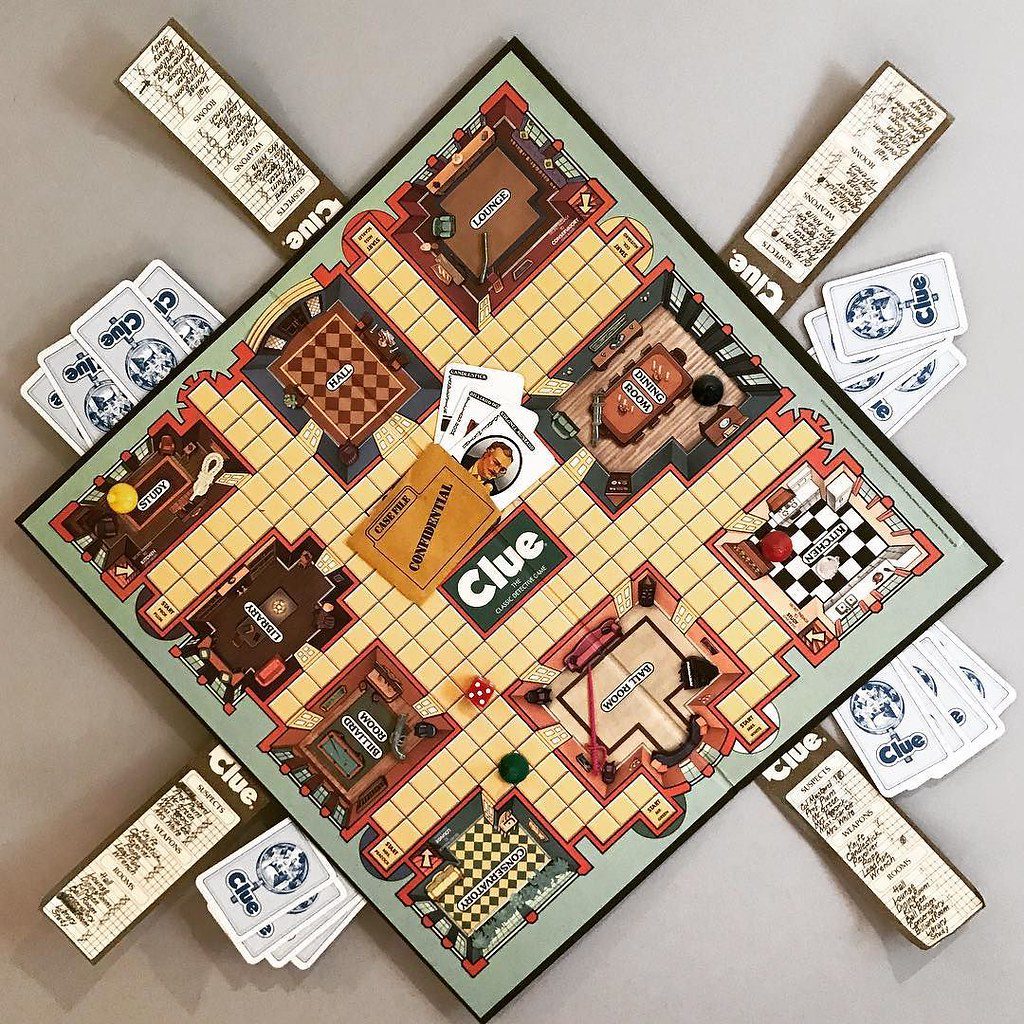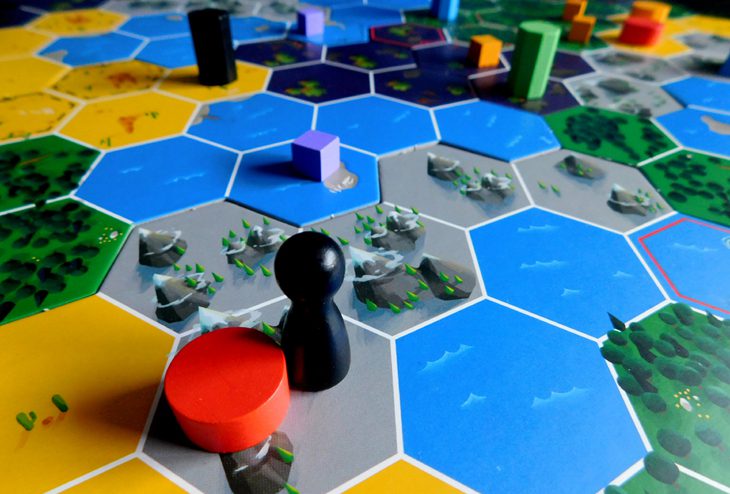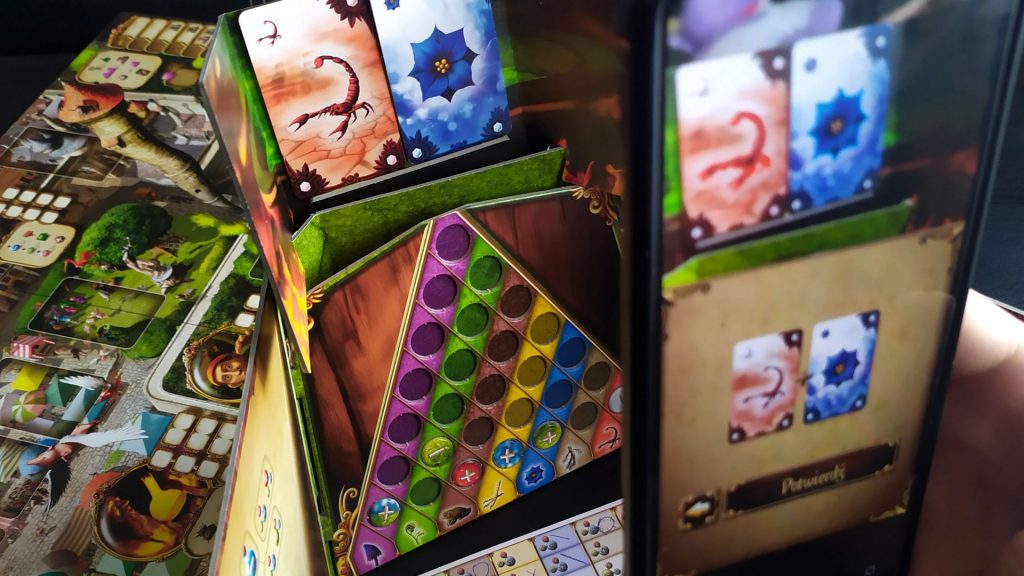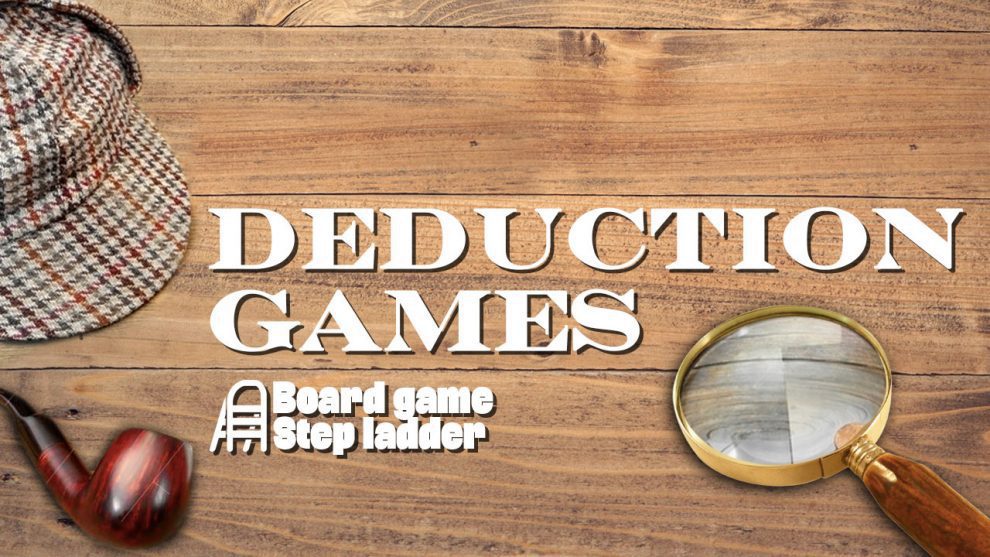“Once you eliminate the impossible, whatever remains, no matter how improbable, must be the truth.”
These are the famous words of Sherlock Holmes, a fictional detective created by Sir Arthur Conan Doyle in 1887. There’s no question that the concept of using deduction and logic to solve a mystery existed long before Doyle penned “A Study in Scarlet”, but there is no denying the effect that Sherlock Holmes’s popularity had on the concept; people began looking at their everyday world in a different way.
The process of deductive reasoning is all about taking in a lot of information and eliminating the unimportant information one piece at a time until you’re left with a small handful of facts–the truth. It’s right there in the name…deduction. It was only reasonable that someone would eventually make a game of it.
And that’s the topic of today’s Board Game Step Ladder. The games on today’s ladder task the players with solving mysteries by eliminating the possibilities, one at a time, until they arrive at the solution, hopefully before their opponents do. As you will soon see, these games all manage to pull it off in very different ways.
Clue -> Cryptid -> Alchemists
Clue
Perhaps the most famous deduction board game in the world, Clue originally began its life as Cluedo, a portmanteau of “clue” and “ludo”. Launched in 1949, the game took the world by storm and quickly became a staple in game closets all over the world.
The game revolves around a murder that has taken place in a mansion. There are multiple suspects, multiple rooms the murder could have taken place in, and multiple weapons that may have been used. It is never explained why the players are there trying to guess these things. One would assume that the identity of the victim and the room in which they perished would be easy for our fictional detectives to figure out since they are presumably standing over the corpse, but whatever. Let’s just go with it.
Central to the game is a board that depicts the layout of the mansion in question, its rooms connected together by passageways, three decks of cards (for the rooms, suspects, and weapons), and Detective Pads on which the players record their findings in secret. During the game’s setup, one card will have been drawn at random from each of the three decks and placed into an envelope. The remaining cards will have been shuffled and dealt out to the players. Then the game is afoot!

Since they know that the contents of the envelope are the solution, players can already begin eliminating possibilities just by looking at their own hand of cards. If you’re holding the candlestick, for instance, you know the candlestick couldn’t possibly have been the murder weapon. You’d secretly check off the candlestick as a possibility on your Detective Pad. Eliminating these possibilities is the name of the game.
On your turn, you move into a room and wager a guess, but the guess must contain the room in which you’re standing. Once you’ve wagered your guess, proceeding clockwise around the table, one of the other players must disprove your claim by revealing one of the cards in their hand to you in secret. If nobody can do this and you’re not holding any of the named cards yourself, then you’ve solved the mystery.
Clue is a game that, on the surface, has you just solving a single mystery. In reality, though, you’re also trying to solve the mystery of which cards your opponents are holding so that you can wager your guesses accordingly, always receiving new information if possible. For instance, if you’ve wagered a guess in the Library and the person sitting to your left shows you the Library card, it would be unwise to guess the Library again because they could simply show you the exact same card. You’ll have wasted an opportunity to gain new information.
I could go on and on about different strategies for doing well in a game of Clue, but I’m going to save you from having to read all of that. Suffice to say that Clue does a very good job of making you feel exceedingly clever at times and, no doubt, this is one of the reasons that it continues to do so well over 70 years after its initial release with very little changes in its design. Clue shows us that deduction done right can create a satisfying game experience.
The next game on this list ups the difficulty and also eliminates the need for paper and pencil while still maintaining the simplicity of the end goal. Namely, solve the mystery by eliminating possibilities.
Cryptid
A cryptid, for those not in the know, is a creature that has been claimed to exist but has never been proven; Sasquatch, the Loch Ness monster, and chupacabra are all good examples. The game of Cryptid has the players looking out over a hex-grid map trying to figure out where the mystery creature is hidden. The map features different types of terrain and structures in different colors. Each of these is a visual indicator that players will be using in order to deduce the location of the mystery beast, whatever the mystery beast might be (this mystery is never solved).
At the beginning of the game, a setup card is selected at random that will dictate how the map tiles are arranged and where the little bits and pieces will be placed. Each player also receives some cubes, some discs, a clue book that is filled with numbered clues, and a clue card that tells them which number they will be using for the current game. For instance, your own personal clue might be something like “within three spaces of a blue structure”. So, just like (and simultaneously unlike) Clue, you already possess a piece of the solution. While Clue gives you elements that the solution CANNOT CONTAIN, Cryptid gives you an element that the solution DOES. And this knowledge is known only to you. Just by looking at your clue card and examining the board, you can already eliminate a large portion of the real estate.
On the surface, the turns in Cryptid are simple. A player will place their pawn on a space and ask a specific player whether or not the cryptid could be in that space (called ‘questioning’) or wager a guess (called ‘searching’). A questioned player will either answer “yes” by placing one of their discs on the space or “no” by placing one of their cubes. If the questioned player places a cube, then you must also place a cube. The cube indicates that its location does not work with your clue. When searching, all players must either place a disc or a cube. If everyone places a disc, including you, then you’ve found the cryptid!

What makes Cryptid substantially more difficult than Clue isn’t necessarily the act of deduction itself or even the way that information is gathered. The difficulty lies in that, with the exception of each player’s secret clue, all of the information is public knowledge. This creates a delicious sense of tension that just isn’t present in Clue as everything you do also helps your opponents. And this leads to you, as a player, having to be ultra-clever (without lying!), tossing red herrings all over the place like Johnny Appleseed and his seed bag. Only your seed bag is overflowing with deception.
Like Clue, Cryptid is a game of pure deduction. While the two games share similarities, both manage to evoke completely different experiences. In the next game on our list, deduction is only one piece of the puzzle, but it’s just as important. The pad and paper have returned, but now there’s also a smartphone app involved.
Alchemists
Alchemists mixes the deductive element of the previous games on this list with the mechanics of a traditional worker placement game. The players take on the roles of alchemists studying at a school for, you guessed it, alchemy. Each alchemy ingredient has a different alchemical makeup that the players are trying to deduce so that they can publish their findings to scientific journals and receive the acclaim and adoration of their peers.
In order to learn this, though, the players are going to have to create potions and test them either on themselves or some of their brave students and record the results following what the game refers to as ‘the rules of alchemy’. But I’m getting ahead of myself.
In order to make potions, you’ll need ingredients. In order to publish articles, you’ll need money. And this is where the worker placement comes in. The game board is divided into several sections. Each player will be placing their cubes (workers) into these locations each round and then activating each section in clockwise order. The different areas of the board allow you to do things such as collect ingredients, sell them for gold or to mix into potions, sell potions to wandering adventurers, publish your own theories or debunk theories that others have published, as well as the aforementioned potion testing. And, like virtually every other worker placement game in existence, you’ve only got a limited number of workers to place and you’ll be competing for the different actions. Not only are some actions limited in how many players can use them, but some are more effective the earlier you get your workers there.
But this isn’t a worker placement step ladder. This is a step ladder all about deduction. So, let’s refocus on what is arguably the best part about Alchemists, figuring out the alchemical makeup of the different ingredients.
Each player begins the game with a player screen behind which is hidden a color-banded pyramid dotted with circles as well as a piece of paper, called the deduction grid, where the players will record what they have discovered in their research. At the bottom of the pyramid, corresponding to the color bands, are the eight different ingredients.
When a player creates a potion, they will place two of the ingredient cards they have collected side by side and then scan them with the app. The app will produce a result which will be shared with the other players. At the intersection of the pyramid leading from the two ingredients that were combined, the player will place a token matching the result displayed in the app. For instance, combining a scorpion and a frog may result in a green + sign potion. The player would place a green + sign token into the circle where a line drawn from the scorpion and a line drawn from the frog would intersect. Then the player would record the results into their deduction grid following the rules of alchemy which I mentioned earlier.

Every ingredient corresponds to exactly one alchemical and each alchemical contains three aspects: blue, red, and green. These are displayed as three colored circles arranged in a triangle and will contain either a + sign or a – sign and either be large or small. Two colored circles with different sizes, but matching signs will result in a specific type of potion being created. In the example from the previous paragraph, based on the result, you know that the alchemical for the scorpion and the frog must have a green + sign involved, but you cannot deduce which of the two was the large circle or the small circle. You just know that a large green + sign and a small green + sign result in a green + sign potion. Knowing this, you can eliminate all of the alchemicals for these two elements containing green – signs. You’re that much closer to knowing their alchemical make ups.
And that’s the idea of the game. You’re trying to be the first person to publish the alchemical compositions of the different ingredients in order to earn the most reputation. Being the first to publish will earn you more reputation, but if your deduction is flawed, another player can debunk your theory by proving that at least one of the alchemical aspects that you have proposed is wrong. If they successfully debunk your theory, you lose points and they gain some. But you’ve gained some important information about the alchemical’s composition in the process, so all is not lost.
The game ends after 6 rounds. In addition to the points earned from various things during the course of the game, additional points are earned from various artifacts and favor cards that players may have acquired, grants that players may have earned, and leftover gold. Oh, and points for deducing the alchemical compositions correctly. I’m not going to go into a lot of detail about all of the items I just mentioned. Suffice to say, Alchemists is more than just a simple deduction game, but deduction is definitely a major part of it. No doubt you can see that Alchemists is a game far advanced beyond the challenge set forth by Clue, but that game’s DNA can clearly be seen.
From cold-blooded murder to the Mothman to potion making, deduction games are here to stay and it’ll be interesting to see where this kind of gameplay takes this hobby into the future. We hope you enjoy your journey up the Step Ladder. We’d love to hear about your adventures in the comments below!











Thank you for continuing to write these!
Thank you for continuing to read them!